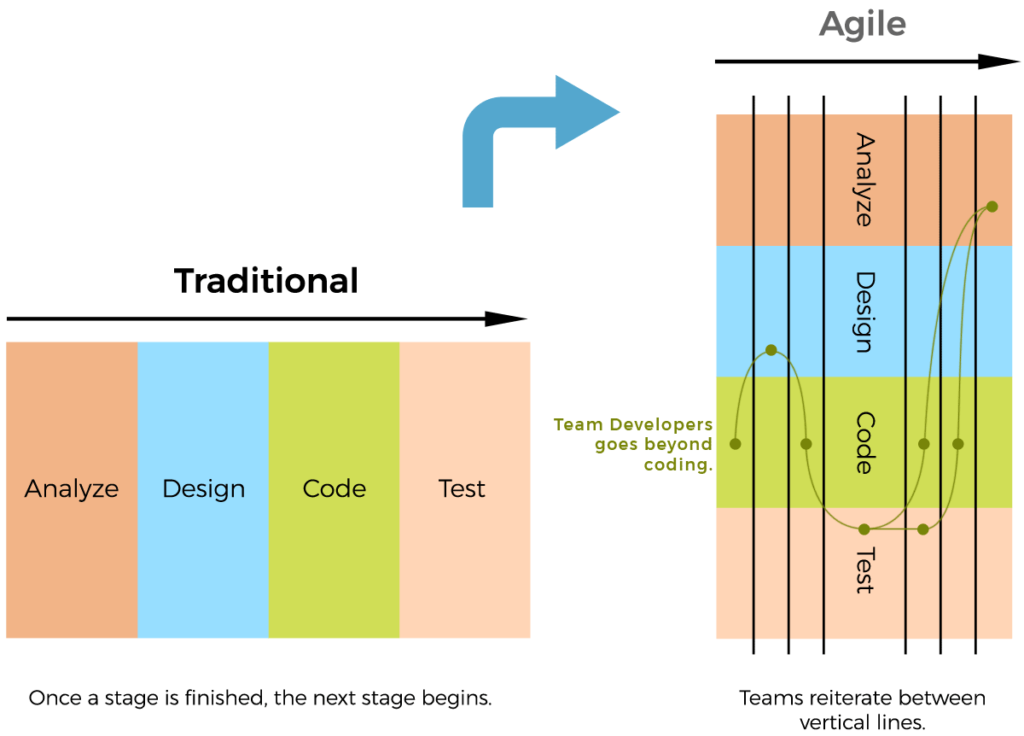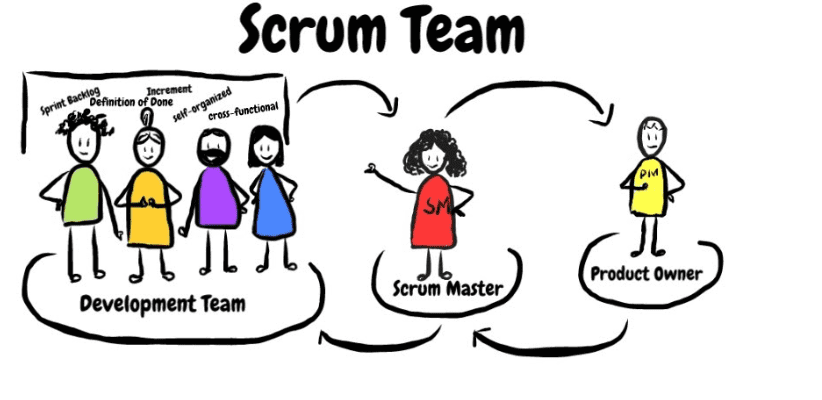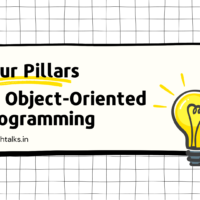Hey everyone, In this article we will talk about the Agile Methodology process in Project Management, which is being used to manage and deliver the project by performing small tasks. Agile is a popular development methodology widely used by development teams.
It is an easy-to-understand and very productive process. It doesn’t create any dependencies between the team members. So that members can do their work without wasting any time.
At the end of this article, you will come to know about the flow of the Agile process. Ok so, Let’s start:
1. What is Agile?
Agile means “Division of tasks into short phases of work and frequent reassessment and adaptation of plans.”
Agile is a methodology that delivers software or value incrementally from the start of the project instead of all at once at the end. It’s an iterative and time-boxed model based on the demands of customers by rapid delivery of working software products.

It works by breaking projects down into small tasks of user functionality called user stories, which can be prioritized according to the client’s demand and continuously delivering them in a short two weeks of cycles called Sprints (Iterations).
2. How is Agile different from the traditional model?

| Traditional Model (Waterfall) | Agile Model |
|---|---|
| In the traditional method (Waterfall Model), we can initiate the process only when one stage will complete. It doesn’t follow continuous development. | In the Agile model, Analysis, Design, coding, and testing is continuous activities. |
| If the requirement changes then, it is hard to do again from the initial stage. | As we have already divided it into small tasks, so it would be easy for the developers to change the requirements in a short time. |
| It depends on the requirement analysis and planning done at the beginning of the cycle. | Agile uses an adaptive approach there is clarity on future tasks only in respect of what features need to be developed. |
| The risk of failure is high, and any changes to be incorporated go through strict change control management. | Minimal Risk, the team certainly changes the requirement without any failure of the whole feature. |
3. Key Concepts of Agile
There are some key concepts that you need to understand, the terms used in the agile methodologies are:
1️⃣ User Stories
User stories are the product features and requirements that can add value to the customer. As a user, we need to describe what I want, why, who, acceptance criteria, and Story points.
The stories can be taken in active sprints according to priorities and requirements. The remaining user stories are available in the product backlog list, which can be further taken in other sprints.
2️⃣ Story Points
Story points are a relative unit of measure which tells us whether the story is big or small. You can use different scales to measure the story, for example, 1, 3, 5, 8, and 13 (Fibonacci series), which define the complexity level of the story.
3️⃣ Product Backlog
An ordered list of everything (all features, requirements, tasks) which is needed in the product.
4️⃣ Sprint Backlog
The list of features that are selected to be delivered in the sprint over the period.
5️⃣ Defects
Defects are the failure of the product requirements that usually occur after testing the product requirement mismatch. A bug or defect is stored in the Product Backlog for sequencing and scheduling.
6️⃣ Velocity
A number of story points that are to be delivered at the end of the sprint are called Velocity in agile.
The story points define the capacity of the team to deliver stories in the sprint.
7️⃣ Swimlanes
A visual representation of the story vs the status of the Kanban/Agile board.
8️⃣ Minimum Viable Product (MVP)
A minimal product that meets the client’s expectations, the MVP can help the product team receive user feedback as quickly as possible to iterate and improve the product.
9️⃣ Release
It contains several iterations or sprints.

4. The Agile Team
In Agile, there are three main roles:
Product Owner
They are the end-users who define what stories are more valuable and prioritized. They will create the stories (Owner of the backlog) and describes the features or requirements they want in the product.
Scrum Master
The one who knows about Agile and the flow process is Scrum Master. He/She has the responsibility to initiate team meetings, interacting with clients, schedule daily standup meetings. They have the responsibility to clear any blockage in the story or task from the client side.
Scrum Master ensures the team remains on track.
Delivery Team
Most of the people are falling down in the Delivery Team. Implementation of the stories is to be done by a delivery team that includes Developers, Testers, Business Analysts, Team Lead, etc. They define what user stories are part of the sprint.

5. Agile Rituals
You should follow some methodologies in agile for a smooth process. Here are:
✅ Sprint Planning
The planning of sprints has been facilitated by Scrum Master, where all team members are participating in planning. The meeting is where the team can decide which story or task they are going to take in the upcoming sprint. It includes the priorities, story points, and any dependency from the owner’s side.
After deciding the stories, they should be placed on the agile to-do board, which includes Analysis, In Progress, In Review, QA, and Ready for Release, these all are the various stages that need to be performed by the team members.

✅ Daily Stand-ups
The team needs to do a daily stand-up meeting (a small meeting) of around 15 minutes where people standups near the Agile/Kanban Board.
In this meeting, everyone needs to give their updates like what they did yesterday, and what they will be doing today, and share blockage or dependency with the team (if any). The delivery team and Scrum Master are part of this stand-up meet.
✅ Sprint Review
It is the showcase or demo session, where the team presents what they have delivered over the sprint. Generally, it happens between the Team and the Product Owner, but before presenting in front of the owner, you need to do one internal demo session to make it clear what things you show to them (Owner).

✅ Retrospectives
This meeting can be done after the Sprints to Review, Revise & Adjust. In this meeting team has discussed on feedback:
What went well?
How can we improve more? If something did not go well.
What should you do differently in the upcoming sprints?

6. Benefits of the Agile Model
We have already discussed the Model, but what are the benefits we have after using it? Agile methods are widely accepted in the software world. And it is used in most IT organizations and small companies also.
It saves our time and makes us better understand the requirement, which leads us to avoid going in the wrong direction. It is an easy and iterative process. Ok, so let’s have a look at some of the benefits:
Easy to manage the tasks.
It is fast, which means the development life cycle takes less time.
Delivers early partial working solutions.
There is transparency between the team and clients. Clients have the opportunity to get easily involved throughout the project.
Focuses on Business Value, the team understands what is most important to the Client’s Business and would be delivered the features that provide or focused on more Business value.
It improves qualities by breaking down the project into manageable units so the project team can focus on high-quality development, testing, and collaboration.
It gives flexibility to developers.
7. Agile Tools
We have a lot of tools available that are used for Agile Projects. Here is a list of great tools which you can use for your Agile projects. Many of them are completely free!
You can check out the official websites by clicking on the images.
I recommend you to use JIRA if you have enough budget to buy it because this is one of the most popular and best Agile tools of all. Also, if you want to use the free tool, then go for Trello.
So, that’s all about the Agile Methodology in Project Management which helps project teams deal with many of the most common project pitfalls (such as cost, schedule predictability, and scope) in a more controlled manner.
Hope you like it 👍 and if you find this useful then don’t forget to share this with your friends or on social media. And If you have any queries, please do ask in the comments section or anything that you want through mail then contact.
Thanks.😊
Also, read
- Designer vs Frontend vs Backend in Web Development
- All about GitHub and its link with Git – A step-by-step guide
- Important Basic Git Commands – Developers should know
- What is API and REST APIs? – In easy language

















Really appreciable sir👍👍👍
Thankyou so much for reading my posts.